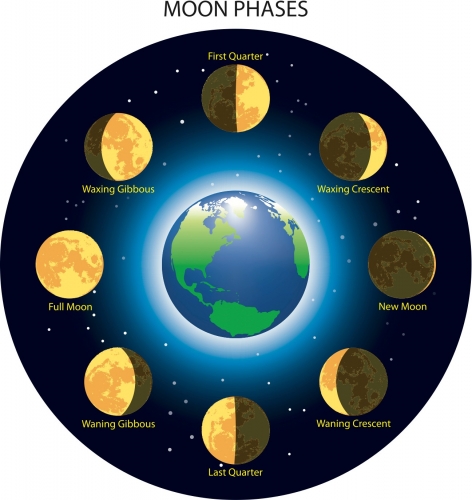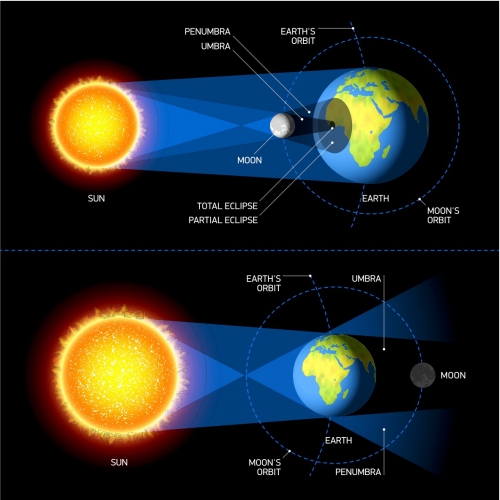The Earth has a natural satellite that orbits it - the moon. There is no air, wind or rain on the moon, which means that there is no life. However, it is because of the moon that there is life on Earth. Billions of years ago, the Earth crashed with another planet. This collision caused a part of the Earth to break away, but it was kept in orbit around the Earth due to the Earth's gravity.
.jpg)
The moon's gravity causes tides nowadays, but millions of years ago it is believed that it was the moon's gravity that gathered all the water and steam in the atmosphere and turned them into the oceans.
The moon is much smaller than the Earth and it does not produce its own light. We can see it because it reflects light from the Sun. The moon's shape does not change, but we see different parts of it lit up, so it appears to be in different shapes - these are called the phases of the moon (see diagram).

Half of the moon is always lit by the Sun, but we cannot see all of the lit part. When the moon is between the Sun and the Earth, we cannot see any lit part of the moon. This is what we call a new moon. When we can see all of the lit part of the moon it is a full moon. It takes 29.5 days between two full moons - this is called a lunar month. It takes 29.5 days for the moon to orbit the Earth.
Sometimes the moon moves into the shadow of the Earth (see bottom part of diagram below) and a lunar eclipse takes place.

When the moon is directly between the Earth and the Sun, part of the Earth is in the shadow of the moon. This is called a solar eclipse, as people in the shadow cannot see any part of the Sun (total eclipse). At the same time, people in some other parts of the Earth can still see part of the Sun (partial eclipse). The upper part of the diagram above shows a solar eclipse.
That's a lot to take in, so feel free to read it again before starting the questions.








